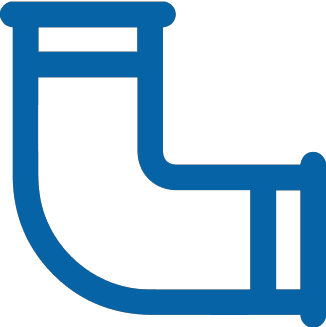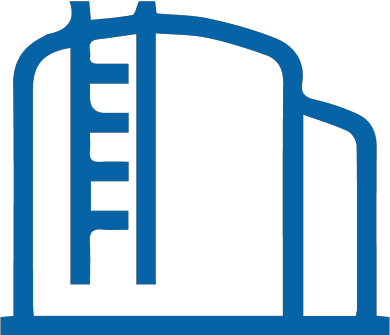Concrete Cracking and Deterioration
Various factors can cause these structures to develop sizable cracks, through which wastewater can escape by exfiltration. Cracks can develop in aging concrete wastewater infrastructure for many reasons, including earth movements or daily and seasonal temperature changes that cause expansion and contraction, such as freeze-thaw. Additionally, harsh chemicals used to treat wastewater can deteriorate the concrete, as can exposure to hydrogen sulfide (H2S) gas, a form of sulfuric acid (H2SO4) in sewers created by anaerobic organisms. Groundwater could also enter the wastewater system through infiltration. Leaks, cracks, and damage to existing coating systems top the list of challenges in facility maintenance and new construction and can also trigger severe financial penalties. Since the EPA regulates municipal wastewater and stormwater management, concrete cracks or leaks that lead to wastewater exfiltration or groundwater infiltration can put the municipality in violation of those regulations.
For concrete repairs in wastewater infrastructure from municipal manholes and lift stations to clarifiers, trenches, and sumps. A cement material is traditionally used to repair wastewater-related sewer leaks. But this process has disadvantages, as do other coating materials. Hydrogen sulfide [H2S] gas eats away at the cement in sewer concrete, so it may only have a lifespan of a few years. Polyurethanes have more elongation but nothing like polyurea. Because much lower elongation properties will limit epoxies, they will crack and don’t bridge cracks well.
Advanced polyurea coatings and liners are ideal for wastewater infrastructure rehabilitation by delivering strong, flexible, abrasion- and chemical-resistant waterproofing that not only bridges existing cracks but can elongate up to 400% without cracking. The spray-applied waterproof coating creates a seamless, waterproof, durable protective liner that stops leaks and strengthens the integrity of the entire structure. It exhibits superior physical properties such as elongation up to 400%, cracks bridging, hardness, and tensile strength to create a robust industrial liner that protects, strengthens, and waterproofs the infrastructure. Because these systems set and cure rapidly and can be installed and used in many temperatures, they also minimize downtime.






































